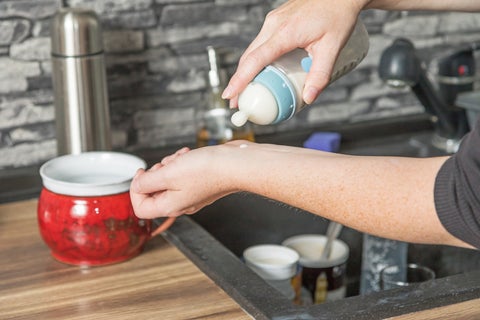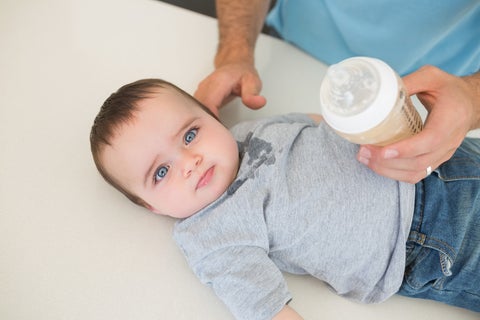Babies need milk for growth and sustenance after they are born. Breastfed babies may not find it as enjoyable as non-breastfed babies to consume milk. Even if you’re using a formula, the taste might not appeal to your infant. However, there are ways to get your baby to drink milk when they don’t want to. All babies need milk for growth so it is important to get them to drink milk from an early age. Your baby can get nutrition from other sources, but milk is the healthiest food for infants and is likely to be the easiest to get.
When babies refuse to drink milk, it can be a confusing and worrying time for parents. That’s why it’s natural for you to worry about your children’s health. Powdered baby formula is an alternative to breast milk or cow’s milk. If your child is upset, it may be appealing to offer a powdered formula as a comfort. However, a baby who drinks excessive amounts of the formula may miss out on essential nutrition present in breast milk or cow’s milk.
How to tell if a baby is underfeeding?
Parents worry their bottle-fed babies aren’t drinking as much milk as they thought they should be. The consumption of less milk could be indicative of underfeeding, but not necessarily so. Due to developmental changes, the amount of milk taken may decrease. For instance, the growth rate of a baby naturally slows down with age, requiring less milk. The drop usually occurs around the four or five-month mark in previously overfed babies.
What temperature should my baby’s milk be?

Although the ideal milk temperature is just below body temperature – approximately 98.6 degrees Fahrenheit – that’s merely a guideline. To avoid using the thermometer, you might consider placing a few drops of milk on your wrist to measure the temperature. If it feels cold, warm it up a little more; if it feels hot, let it cool. Bonus tip: after warming the bottle, swirl the contents around to ensure consistent temperature throughout.
Let’s make one thing clear: It’s not medically necessary to heat a baby’s bottle; it is a matter of preference. While young babies, especially, may have a strong taste for warm milk, older babies may be more open to tolerating lukewarm or cold milk.
Can I give milk alternatives to my child?
It is important for toddlers to have access to dairy products. An ideal milk alternative for toddlers is one that is as much protein and calories as cow’s milk as well as having the same amount of sugars as milk. Almond, coconut, and rice milk have a minimal amount of protein, while hemp and oat milk contains some protein. If your child is old enough to drink milk from a glass, Sipahh Milk Flavoring Straws may help enhance their milk drinking experience.
When to see a doctor?
While it is not unusual for a baby to refuse a bottle some of the time, there may be instances where the refusal is a sign of an eating disorder or an illness requiring medical attention.
One to five percent of very young children suffer from feeding disorder, characterized by a lack of food intake and nutritional deficiency, leading to malnutrition. You should consult with your doctor if you suspect your child is suffering from a nutrition disorder, as these disorders have been associated with severe problems in young children.
In the short term, children with feeding disorders will experience weight loss and nutritional deficiency. If left untreated, your baby may suffer from growth problems, cognitive deficits, stunted neurodevelopment, and emotional and behavioral impairment over the long term. You should also consult with your child’s doctor if an illness or pain prevents your baby from eating normally. Additionally, your infant may exhibit the following symptoms, which may require medical attention:
- Fever
- Vomiting
- Constant crying
- Diarrhea
- Difficulty breathing
Talk to your pediatrician about any physical or psychological disorders that might contribute to fussy eating in your child.




